Space
Sign up for our newsletter
We summarize the week's scientific breakthroughs every Thursday.
-
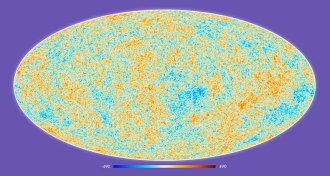 Cosmology
CosmologyMost precise snapshot of the universe unveiled
New results from the Planck satellite provide the most detailed look yet of the makeup of the universe.
-
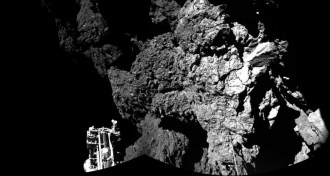 Planetary Science
Planetary ScienceComet lander’s exploration cut short
The comet lander Philae made history with its touchdown on comet 67P/Churyumov–Gerasimenko, but a series of small hiccups prevented the robot from recharging its batteries, giving it only about 57 hours to explore the alien world.
-
 Physics
PhysicsNegative mass might not defy Einstein
Repulsive matter could have played a role in the early universe, a computational study finds.
By Andrew Grant -
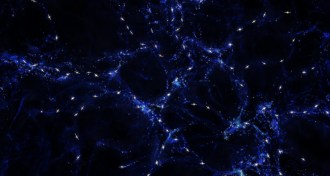 Cosmology
CosmologyGalaxies may be aligned across 1 billion light-years
Powerful plasma jets from cores of galaxies seem to mysteriously align with one another and hint at an unknown mechanism shaping galaxy groups.
-
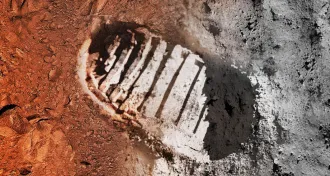 Planetary Science
Planetary ScienceSetting sights on Mars — a half-century ago
Fifty years ago, the United States turned its eyes toward Mars and set a goal of sending humans as soon as possible.
-
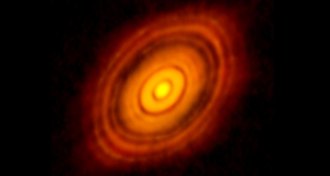 Planetary Science
Planetary SciencePlanets stake their claim around infant star
At the center of the newly released telescope image is HL Tau, a star located about 450 light-years away in the constellation Taurus. A dense disk of gas and dust surrounds the star, which is a youthful million years old.
-
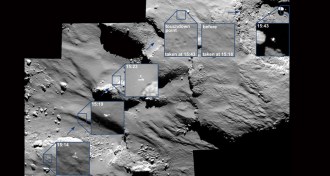 Planetary Science
Planetary SciencePhilae lander sent in a surprise before going to sleep
The robotic probe that landed on comet 67P/Churyumov-Gerasimenko has beamed back some surprises about the icy boulder.
-
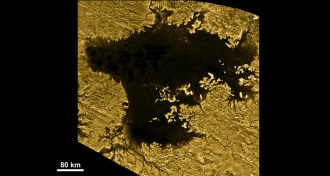 Planetary Science
Planetary ScienceCassini maps depths of Titan’s seas
NASA’s Cassini spacecraft finds that some methane seas on Titan extend more than 200 meters beneath the Saturnian moon’s surface.
-
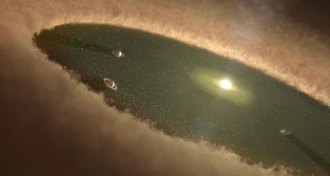 Planetary Science
Planetary ScienceUnseen planets sweep up dust around young star
A large gap in the dusty disk around a young star reveals what our solar system might have looked like 4.6 billion years ago.
-
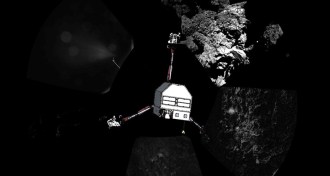 Astronomy
AstronomyGood night, Philae
The Philae lander has depleted its batteries and gone into idle mode, probably drawing to a close the surface-based study of comet 67P/Churyumov-Gerasimenko.
-
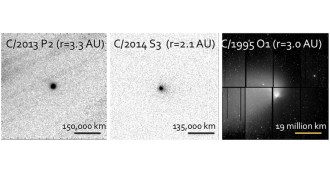 Planetary Science
Planetary ScienceTwo travelers from far beyond Neptune return home
Two bodies approaching from the edge of the solar system may have been tossed out there by Jupiter over 4 billion years ago.
-
 Astronomy
AstronomyA still mysterious solar system
Whether or not a Planet X exists, the puzzle, like a good mystery, delights the mind. But better than any novel, the puzzle’s solution has the potential to reveal something new and unexpected about our solar system.
By Eva Emerson